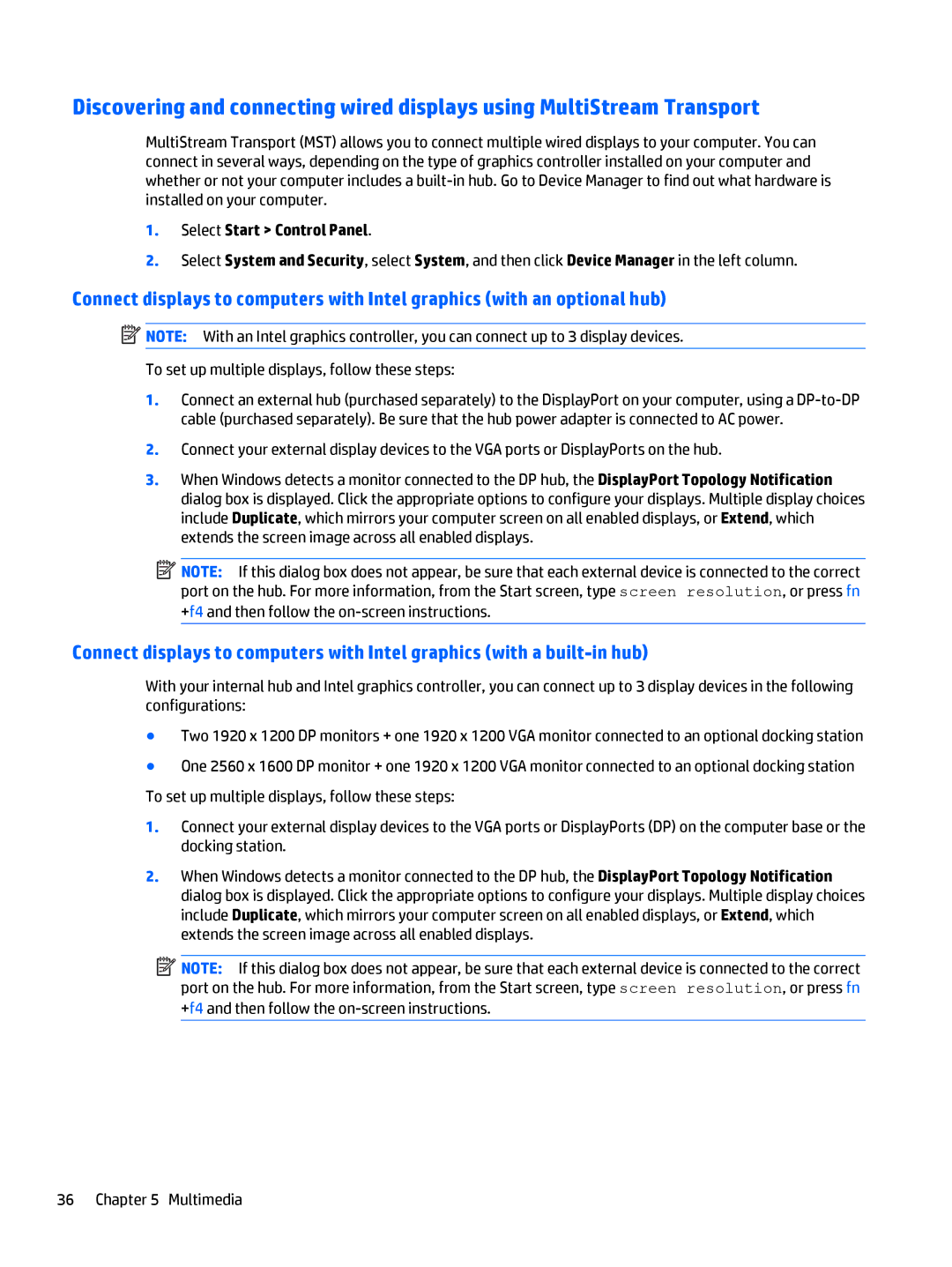
Discovering and connecting wired displays using MultiStream Transport
MultiStream Transport (MST) allows you to connect multiple wired displays to your computer. You can connect in several ways, depending on the type of graphics controller installed on your computer and whether or not your computer includes a
1.Select Start > Control Panel.
2.Select System and Security, select System, and then click Device Manager in the left column.
Connect displays to computers with Intel graphics (with an optional hub)
![]() NOTE: With an Intel graphics controller, you can connect up to 3 display devices.
NOTE: With an Intel graphics controller, you can connect up to 3 display devices.
To set up multiple displays, follow these steps:
1.Connect an external hub (purchased separately) to the DisplayPort on your computer, using a
2.Connect your external display devices to the VGA ports or DisplayPorts on the hub.
3.When Windows detects a monitor connected to the DP hub, the DisplayPort Topology Notification dialog box is displayed. Click the appropriate options to configure your displays. Multiple display choices include Duplicate, which mirrors your computer screen on all enabled displays, or Extend, which extends the screen image across all enabled displays.
![]() NOTE: If this dialog box does not appear, be sure that each external device is connected to the correct port on the hub. For more information, from the Start screen, type screen resolution, or press fn +f4 and then follow the
NOTE: If this dialog box does not appear, be sure that each external device is connected to the correct port on the hub. For more information, from the Start screen, type screen resolution, or press fn +f4 and then follow the
Connect displays to computers with Intel graphics (with a
With your internal hub and Intel graphics controller, you can connect up to 3 display devices in the following configurations:
●Two 1920 x 1200 DP monitors + one 1920 x 1200 VGA monitor connected to an optional docking station
●One 2560 x 1600 DP monitor + one 1920 x 1200 VGA monitor connected to an optional docking station To set up multiple displays, follow these steps:
1.Connect your external display devices to the VGA ports or DisplayPorts (DP) on the computer base or the docking station.
2.When Windows detects a monitor connected to the DP hub, the DisplayPort Topology Notification dialog box is displayed. Click the appropriate options to configure your displays. Multiple display choices include Duplicate, which mirrors your computer screen on all enabled displays, or Extend, which extends the screen image across all enabled displays.
![]() NOTE: If this dialog box does not appear, be sure that each external device is connected to the correct port on the hub. For more information, from the Start screen, type screen resolution, or press fn +f4 and then follow the
NOTE: If this dialog box does not appear, be sure that each external device is connected to the correct port on the hub. For more information, from the Start screen, type screen resolution, or press fn +f4 and then follow the
36 Chapter 5 Multimedia
